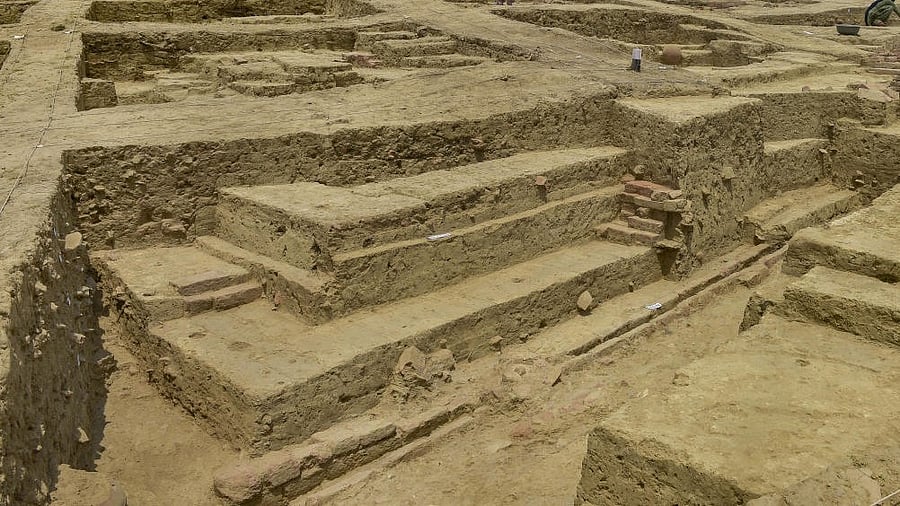
Indus Valley excavation site RGR 1 of Archeological Survey of India, where burnt-brick is traced, at Rakhigarhi in Hisar district.
Credit: PTI
New Delhi: Four severe droughts, each lasting longer than 85 years, contributed majorly in the eventual fall of the Indus Valley Civilisation, Indian scientists reported on Thursday, providing fresh inputs to mysteries surrounding the decline of the mighty civilisation.
Their findings may help explain why this major ancient civilisation — a contemporary of ancient Egypt located around the modern India-Pakistan border — slowly declined, and highlights how environmental factors could shape ancient societies.
The Indus Valley Civilisation was one of the earliest urban cultures, existing between 5,000 and 3,500 years ago around the Indus River and its tributaries in modern-day Pakistan and northwest India.
At its peak, between 4,500 and 3,900 years ago, it was characterised by advanced cities, modern water management systems and sophisticated writing. However, the reasons for the civilization’s prolonged decline after this peak are not yet fully understood.
Studies in the past have proposed factors like climate change, seawater retreat, droughts, floods, and shifting river dynamics, which may have triggered social and political changes. However, the exact nature of the triggering factors has long been debated.
To find out the answer, Vimal Mishra at Indian Institute of Technology, Gandhinagar and colleagues from the University of Arizona and University of Colorado simulated climate conditions across the Indus Valley Civilisation region between 5,000-3,000 years ago.
They combined these results with data from several indirect measures of past climate conditions, including the geochemistry of stalactites and stalagmites in two Indian caves, and the water level records of five lakes in northwest India.
From this, the authors identified a temperature increase over the period of approximately 0.5 degrees Celsius, and a decrease in average annual rainfall across the region of between 10% and 20%.
They were also able to identify four long-term droughts between 4,450 and 3,400 years ago, each lasting more than 85 years and affecting between 65% and 91% of the region.
Out of the four mega droughts, only one continued for less than 100 years. The longest one was a 164 year long spell that happened between 3826-3663 BP.
The authors suggest that these droughts influenced settlement location choice in the Indus Valley Civilisation. Between 5,000 and 4,500 years ago, settlements were concentrated in areas with more rainfall. But from 4,500 years ago onward, settlements shifted closer to the Indus River, probably as the droughts started to affect water availability.
The final 113-year-long drought that they identify, between 3,531 and 3,418 years ago, coincides with archaeological evidence of major deurbanisation in the Indus Valley.
The scientists said the results suggested that climate shifts coincided with the eastward and southward migration of Harappan populations into the Ganga Plains and Saurashtra. More rain and dense river networks in the Indo-Gangetic plains were more suitable for farming.
The authors note that the ancient civilisation may not have collapsed suddenly as a result of any one climate event, but instead declined slowly, with the prolonged droughts a major contributory factor.
“The decline was not the product of a single abrupt collapse, but rather a protracted transformation shaped by both climatic and non-climatic processes...Nevertheless, our findings of simulated and reconstructed river drought over the Indus Valley enhance our understanding of the history of the Harappan civilisation and its intricate relationship with climate change,” they reported in the journal Communications Earth and Environment.
